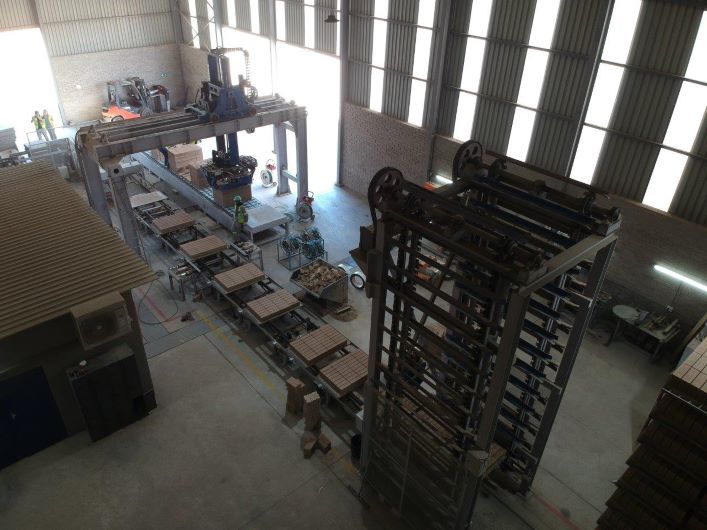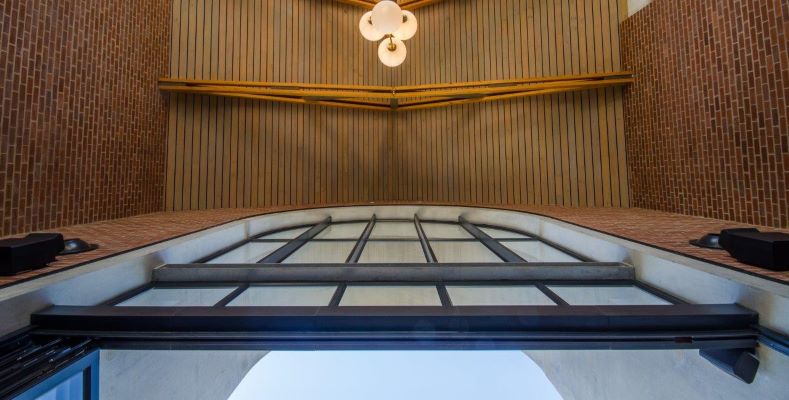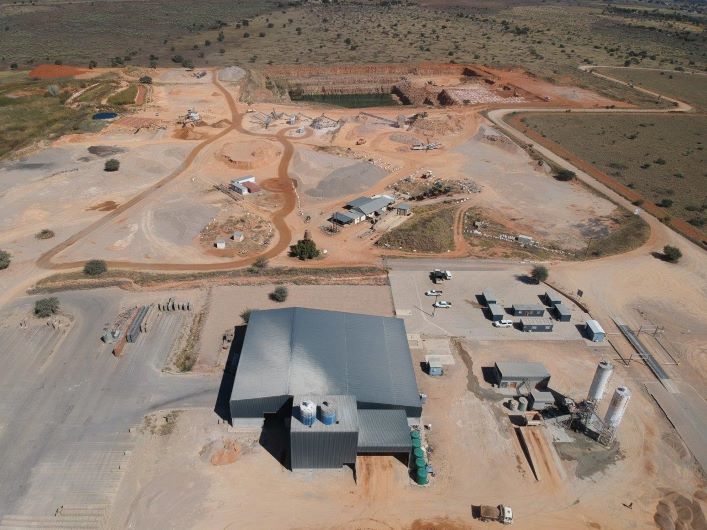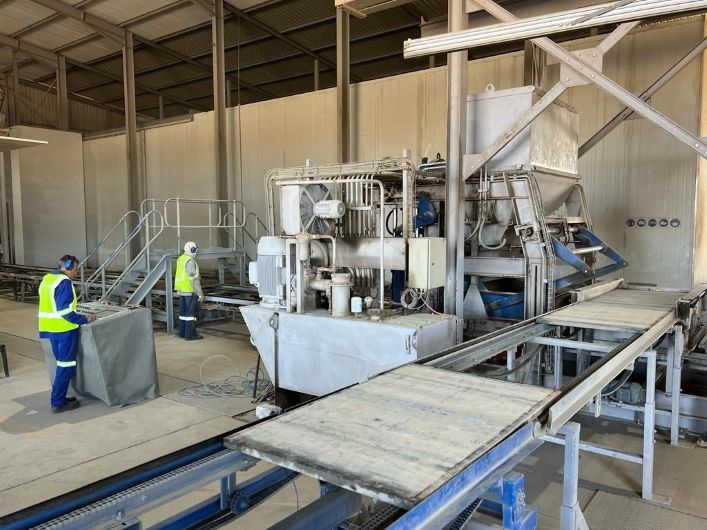
Caption: Part of Northwest Brick Manufacturers plant.
This is Part 2 of a three-part series written by Johann Steyn of Northwest Brick Manufacturers, on behalf of the Concrete Manufacturers Association.
… continued from Part 1.
We are very privileged by being able to mine and crush our own aggregate because it enables us to ensure that our manufacturing plant is fed with a high-quality raw material. What’s more, our crusher dust is classed as sand with a grading from -2 to +0.5mm and our washed crusher dust has a grading of -6 to +2mm. Although unwashed crusher dust does not have a consistent grading, through the process of washing and splitting, the washed crusher dust and sand can be mixed back together in a regulated manner.
We also grade our aggregate weekly to ensure size consistency. This results in consistent compaction throughout the manufacturing process and is also beneficial to the overall consistency in the height or thickness of precast units.
Our material mixing is done by using a PMSA P1500 PAN Mixer with a capacity of 2.25 tons. It is equipped with a high-speed agitator, which is crucial for effective mixing, and our cycle time per mixture can be as low as 165 seconds.
Moisture is the most important element in brick strength. It is common knowledge that by adding the optimum amount of moisture during manufacturing, and retaining moisture during the curing process, it enhances strength.
We use moisture measuring probes in our material bins and the mixer. We do this because washed aggregate already contains high moisture levels which vary constantly. Rainfall is another contributing factor to moisture content. The moisture detected by the probes in the material bins is calculated as a percentage of the measured weight, and where necessary, the mix is adjusted and more material is added to compensate for the weight of the moisture.
For example, if a batch is measured as 1 000kg and has a 5% moisture content, then the moisture weighs 50kg. In this case 50kg of aggregate will be added, thereby upping the overall weight of the mixture to 1 050kg and increasing the solid material weight to 1 000kg. If moisture measurement is omitted, the ratio of moisture to aggregate content fluctuates and also affects the mixtures cement percentages.
Therefore in order to sustain consistent mixture ratios, it is of paramount importance that moisture content is measured. We acquired a moisture-measuring system at great expense, but have found that the benefit of product consistency, have made it well worth it.
Also, with moisture measuring equipment in the mixer, it allows for water addition adjustment to be done automatically to achieve optimal mix compositions. Moreover, this precludes the need for an extra person to estimate moisture content. And establishing consistent moisture to material ratios in the mix facilitates efficient production with little-to-no fine tuning of the brick making machines required.
Continued in Part 3…
More news
- CELEBRATING EXCELLENCE IN THE RESIDENTIAL PROPERTY SECTOR
- PART 4: GIBS PANEL DISCUSSES INTEMEDIATE CITIES ROLE IN AFRICA’S DEVELOPMENT
- EXPOSED AGGREGATE PAVERS COMPLEMENT NEW LIFESTYLE CENTRE
- GIBS PANEL EXPLORES ROLE OF INTERMEDIATE CITIES IN SA’S DEVELOPMENT PART 3
- CITI-CON’S CONCRETE KNOWLEDGE SUCCESSFULLY DEPLOYED ON NEW LANDMARK DEVELOPMENT





